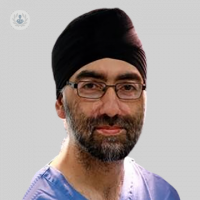Heart transplant
Mr Franco Ciulli - Cardiothoracic surgery
Created on: 11-13-2012
Updated on: 09-11-2023
Edited by: Jay Staniland
What is a heart transplant?
A heart transplant is a surgical procedure that is carried out to replace a damaged, diseased, or failing heart with a healthy heart from a donor. It is only performed on people who have tried other available treatments and types of surgery but have not seen any improvement.
A heart transplant is a complex procedure. Once performed, if monitored well, the chances of survival increase.

Why would heart transplant surgery be required?
A heart transplant is recommended when a variety of other treatment options have been unable to ease heart problems, and heart failure occurs. A transplant is performed for the following reasons:
- there is serious damage following a heart attack
- there is severe heart failure after medications and other surgeries have not been able to solve a heart condition
- the patient has congenital heart abnormalities that other types of surgery can’t solve
- the patient has heart palpitations that could be fatal which haven’t responded to other types of treatment.
Some of the reasons that heart failure may occur include:
- coronary artery disease
- congenital heart defect
- ventricular arrhythmias
- amyloidosis
- if a transplanted heart causes problems and fails.
What does heart transplant surgery involve?
A heart transplant is open heart surgery; a damaged heart is replaced with the healthy heart of a recently deceased person who has chosen to donate their organs. The donated heart must be healthy and as compatible as possible for the patient receiving the transplant, to avoid rejection.
The procedure involves general anaesthetic. Once the patient has been sedated, an incision is made through the sternum and the surgery is begun. The patient’s blood will go through a heart-lung bypass machine to ensure high levels of oxygen in the blood.
Once the incision has been made, the unhealthy heart is removed and replaced with the healthy heart. Once the donor heart has been sutured into place, the extracorporeal machine is disconnected, allowing the blood to flow through the heart.
Tubes are attached to let air, liquid, and blood pass through so the lungs are able to expand normally.
How to prepare for heart transplant surgery
When a patient is informed that heart transplant surgery is required, they need to have a series of tests done to see if they are suitable for the procedure. A specialist team will look at a variety of test results including blood tests and X-rays. The following tests may be carried out:
- kidney and liver test
- electrocardiographs, echocardiograms, and cardiac catheterisations to check the state of the heart
- tests for cancer
- ultrasound
Once the patient has been tested and deemed an appropriate candidate, they will be put on a waiting list.
The placing on the waiting will depend on the type and seriousness of the heart disease.
Post-operative care
A heart transplant patient may need to stay in hospital between one and three weeks following the procedure. They will more than likely be in the Intensive Care Unit (ICU) for the first 48 hours after the operation. For the first few days following surgery, the patient needs to be carefully monitored to avoid infection.
The recovery period following a heart transplant is estimated at three months. Blood test and check-ups will be almost constant at this stage.
The patient will be required to take immunosuppressant medications to ensure that the body doesn’t reject the new organ. It is common to carry out biopsies during the first year to check the heart.
The patient can return to everyday life after around three months.
A transplant extends the life of the patient. The main risk is rejection, however, if monitored correctly, life expectancy can be increased by more than 10 years.
Alternative options to heart transplant surgery
A transplant is thought of as the ideal treatment for patients for whom other methods have failed. The issue is that the waiting list is longer than the donor list.
There are a number of factors that prevent a person receiving a transplant, they include: the person is malnourished, is over 65 years old, has had a recent stroke, has recently had cancer, has HIV or hepatitis, is a drug or alcohol user, or has pulmonary hypertension or diabetes.
Some alternative methods include:
- Cardiac resynchronisation therapy: the heart is stimulated to restore normal working order.
- Ventricular assistance: a left ventricular assist device is implanted.
- Surgical treatment: procedures include; coronary revascularisation in ischemic cardiomyopathy, mitral regurgitation surgery, or a partial left ventriculectomy.









